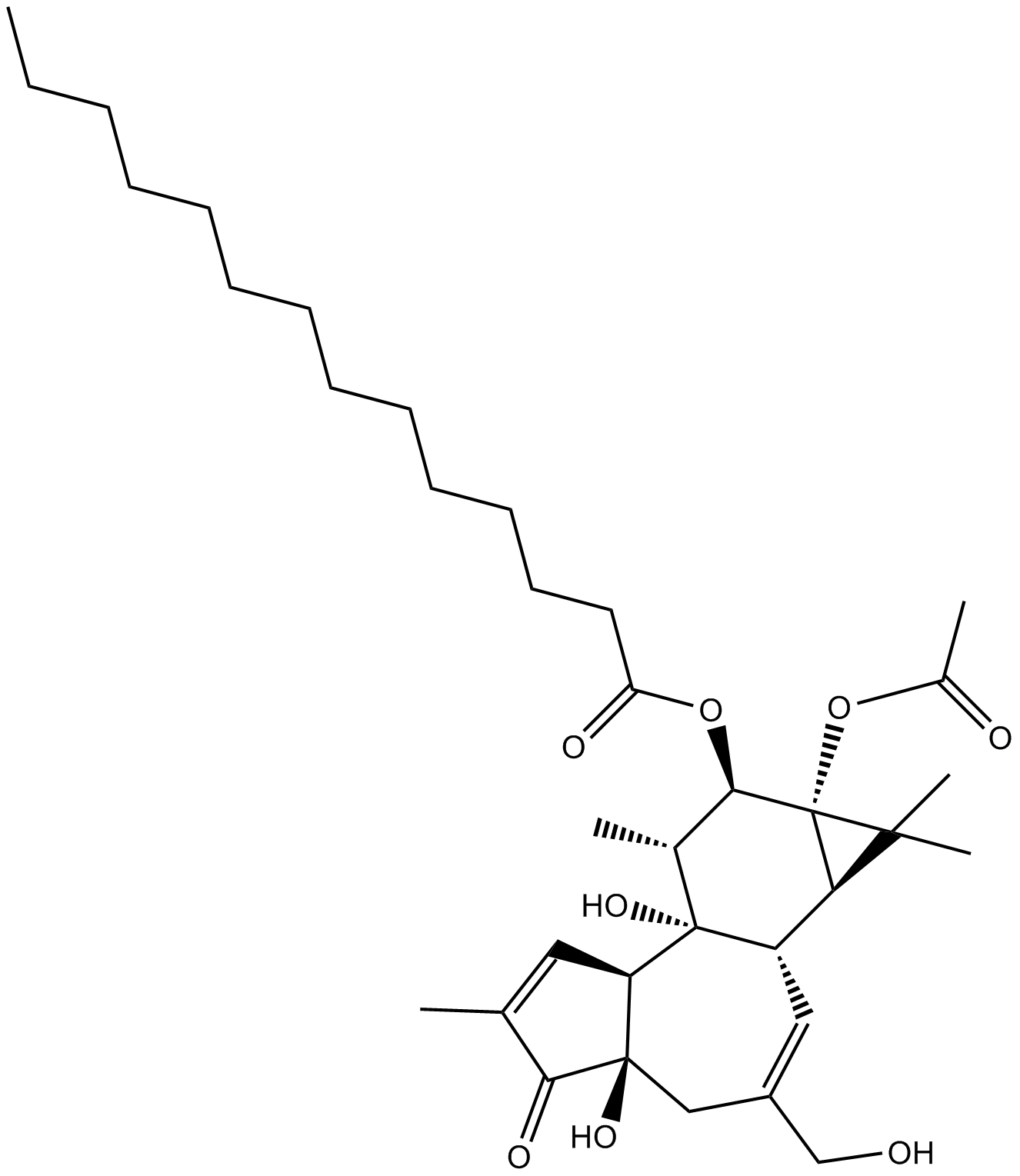12-O-tetradecanoyl phorbol-13-acetate (Synonyms: PMA; TPA; Phorbol myristate acetate) |
| Catalog No.GN10444 |
A PKC activator
Products are for research use only. Not for human use. We do not sell to patients.

Cas No.: 16561-29-8
Sample solution is provided at 25 µL, 10mM.
12-O-tetradecanoyl phorbol-13-acetate (TPA) is an activator of ERK/MAPK with the concentration of 50μm [1].
ERK is an extracellular signal-regulated kinase and transfers signals from a receptor on the cell surface to DNA cooperated with MAPK. It is reported that ERK deficiency leads to the cell uncontrolled growth and is regarded as a target to cure cancers.
TPA is a potent ERK activator. When tested with A549 cells (human lung cancer cell line), TPA treatment led to an early, strong, and relatively transient ERK phosphorylation [2]. In mouse embryo fibroblasts from DUSP5 (+/+) mice, administration of TPA increased levels of ERK expression [3].
In transgenic (Eisuke) mice expressing a F?rster resonance energy transfer (FRET) biosensor for ERK, ERK activity was gradually stimulated upon topical TPA treatment and reached the peak approximately 6 hr later [1].
It is also reported that TPA treatment increased the accumulation of immature myeloid cells and the formation of papillomas during epidermal carcinogenesis (important in the tumor formation) when tested with S100A9 transgenic mice [4].
References:
[1]. Hiratsuka, T., et al., Intercellular propagation of extracellular signal-regulated kinase activation revealed by in vivo imaging of mouse skin. Elife, 2014. 4.
[2]. Refsnes, M., et al., Differential NF-kappaB and MAPK activation underlies fluoride- and TPA-mediated CXCL8 (IL-8) induction in lung epithelial cells. J Inflamm Res, 2014. 7: p. 169-85.
[3]. Rushworth, L.K., et al., Dual-specificity phosphatase 5 regulates nuclear ERK activity and suppresses skin cancer by inhibiting mutant Harvey-Ras (HRasQ61L)-driven SerpinB2 expression. Proc Natl Acad Sci U S A, 2014. 111(51): p. 18267-72.
[4]. Ortiz, M.L., et al., Immature myeloid cells directly contribute to skin tumor development by recruiting IL-17-producing CD4+ T cells. J Exp Med, 2015.
Average Rating: 5 (Based on Reviews and 30 reference(s) in Google Scholar.)
GLPBIO products are for RESEARCH USE ONLY. Please make sure your review or question is research based.
Required fields are marked with *




